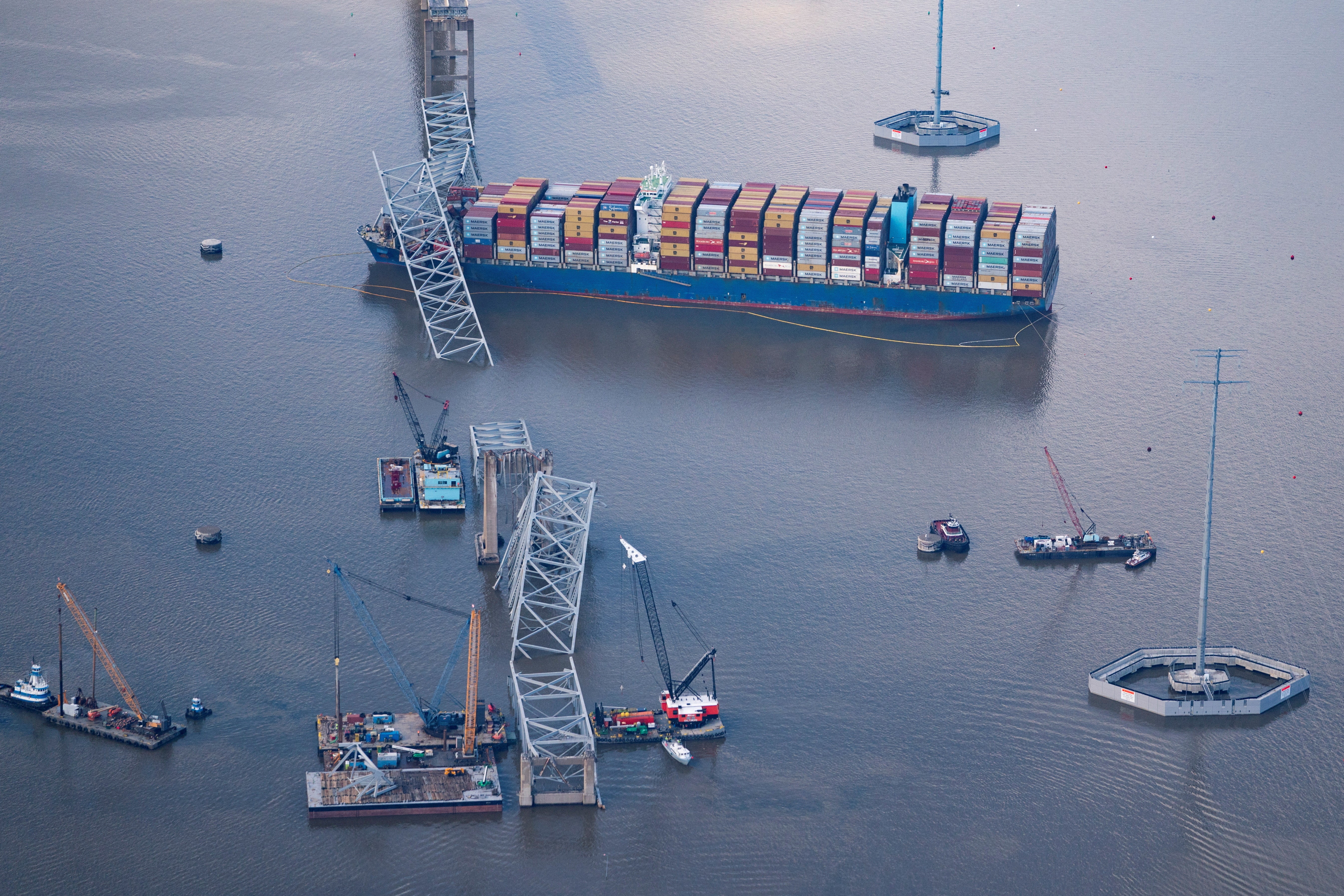Feds slam Dali owners for putting ‘profit over safety’ as they demand $100m for bridge cleanup
Ship owner has sought to avoid liability in March crash that killed six
Your support helps us to tell the story
From reproductive rights to climate change to Big Tech, The Independent is on the ground when the story is developing. Whether it's investigating the financials of Elon Musk's pro-Trump PAC or producing our latest documentary, 'The A Word', which shines a light on the American women fighting for reproductive rights, we know how important it is to parse out the facts from the messaging.
At such a critical moment in US history, we need reporters on the ground. Your donation allows us to keep sending journalists to speak to both sides of the story.
The Independent is trusted by Americans across the entire political spectrum. And unlike many other quality news outlets, we choose not to lock Americans out of our reporting and analysis with paywalls. We believe quality journalism should be available to everyone, paid for by those who can afford it.
Your support makes all the difference.The U.S. government has launched a $100m lawsuit against the owners and operators of the container ship Dali, which destroyed Baltimore’s Francis Scott Key Bridge in March in a crash that killed six and caused an estimated $15m a day in lost trade.
The Department of Justice alleged in a civil claim in Maryland federal court that the ship’s Singaporean owners and operators knew about mechanical issues onboard the Dali when it left port on March 26, bound for Sri Lanka.
“The owner and operator of the DALI were well aware of vibration issues on the vessel that could cause a power outage. But instead of taking necessary precautions, they did the opposite,” principal deputy associate attorney general Benjamin C. Mizer said in a statement. “As a result, when the DALI lost power, a cascading set of failures led to disaster.”
The complaint points to a litany of red flags within the ship’s electrical and steering systems: a backup transformer that was slow to kick in when the ship lost power ahead of the crash; an emergency generator that took too long to turn on; an improper fuel pump that compromised steering; and an anchor that wasn’t ready, as required by law, to release in case of an emergency.
Former employees of the container ship also described makeshift repairs around the ship’s key electrical components, which were often subject to heavy vibration, that prosecutors compared to a “Band-Aid” approach.

The suit seeks punitive damages, plus $100m to recoup funds spent clearing the crash site. The whopping price tag does not include the state of Maryland’s potential claims surrounding the destruction of the bridge itself.
In a statement to The Washington Post on behalf of the ship’s owner, Grace Ocean Private Limited, and its operator, Synergy Marine Private Limited, Darrell Wilson said the suit was “anticipated,” but that the companies “will have no further comment on the merits of any claim at this time.”
“We do look forward to our day in court to set the record straight,” he said.
The DOJ suit is part of a larger legal action from the ship’s owners, who sought in April to deny fault and cap damages in potential lawsuits against them to around $44m.
“The [bridge collapse] was not due to any fault, neglect, or want of care on the part of [Grace Ocean & Synergy], the Vessel, or any persons or entities for whose acts [Grace Ocean & Synergy] may be responsible," the companies argued in a legal filing at the time.
The FBI launched a criminal investigation of the crash in April, and the National Transportation Safety Board is also probing the disaster.
Officials hope to have the bridge rebuilt by 2028.

Join our commenting forum
Join thought-provoking conversations, follow other Independent readers and see their replies
Comments